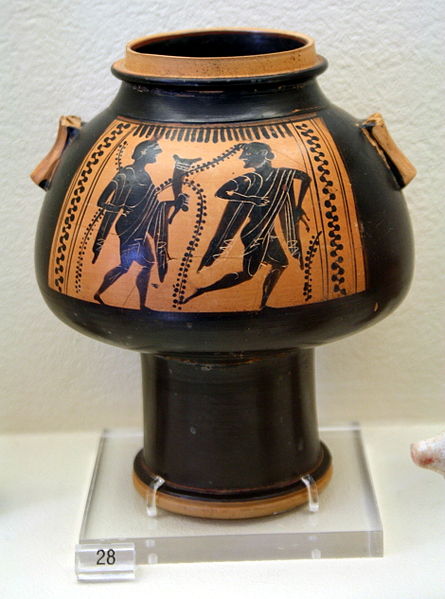Greek terracotta figurines
Terracotta figurines are a wide range of small figurines made throughout the time span of Ancient Greece, and one of the main types of Ancient Greek pottery. Early figures are typically religious, modelled by hand, and often found in large numbers at religious sites, left as votive offerings. Psi and phi type figurines are two very early and simple types, dating as far back as 1400 BCE.
Hermes criophorus (?), Boeotian terracotta figurine, ca. 450 BC, Louvre
Woman with raised arms, typical funerary offering, Cyprus, 7th century BCE, Louvre
Plaster key mold for the reverse side of a figurine of Demeter-Isis, Louvre
Woman bearing offerings, Peloponnese, 4th century BCE
Pottery of ancient Greece
Pottery, due to its relative durability, comprises a large part of the archaeological record of ancient Greece, and since there is so much of it, it has exerted a disproportionately large influence on our understanding of Greek society. The shards of pots discarded or buried in the 1st millennium BC are still the best guide available to understand the customary life and mind of the ancient Greeks. There were several vessels produced locally for everyday and kitchen use, yet finer pottery from regions such as Attica was imported by other civilizations throughout the Mediterranean, such as the Etruscans in Italy. There were a multitude of specific regional varieties, such as the South Italian ancient Greek pottery.
Pottery of ancient Greece
Hellenistic Amphorae, stacked the way they were probably transported in antiquity, display in the Bodrum Museum of Underwater Archaeology
Disjecta membra (a fragment of ancient Greek pottery)
Neoclassical "Black Basalt" Ware vase by Wedgwood, c. 1815 AD








